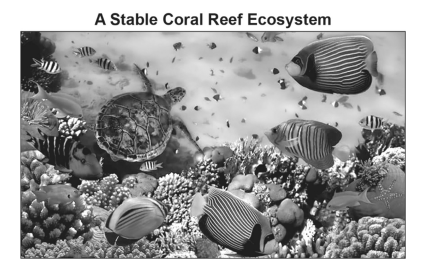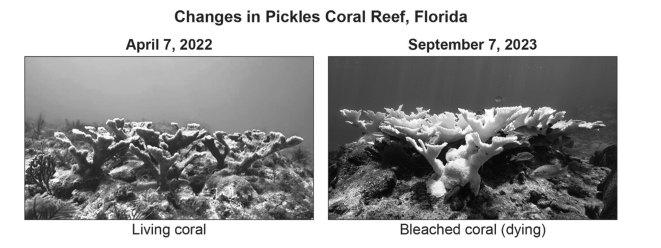HS-LS2-6. Evaluate the claims, evidence, and reasoning that the complex interactions in ecosystems maintain relatively consistent numbers and types of organisms in stable conditions, but changing conditions may result in a new ecosystem.
Introduction
Ecosystems are dynamic systems where various organisms interact with each other and with their environment. These interactions help maintain a balance in the numbers and types of organisms under stable conditions. However, when conditions change, these interactions can lead to the development of a new ecosystem. This review will explore the concepts of ecosystem stability, the impact of changes, and how to evaluate claims, evidence, and reasoning related to these processes.
Main Concepts
Ecosystem Stability: Ecosystem stability refers to the ability of an ecosystem to maintain a relatively constant state, with consistent numbers and types of organisms, despite minor disturbances. Stable ecosystems are resilient, meaning they can recover from small changes and return to their original state.
Complex Interactions: Ecosystems are maintained by complex interactions among organisms, such as predator-prey relationships, competition for resources, and symbiotic relationships. These interactions help keep population sizes and species diversity stable.
Changes in Ecosystem Conditions: Ecosystem conditions can change due to natural events or human activities. These changes can range from modest, such as seasonal floods or moderate hunting, to extreme, such as volcanic eruptions or sea level rise. The impact of these changes can vary, with some ecosystems adapting and others transforming into entirely new ecosystems.
Ecological Succession: Ecological succession is the process by which ecosystems change over time, particularly after a disturbance. Succession can be primary, starting from bare rock or soil, or secondary, where an existing ecosystem is altered but not completely destroyed.
Evaluating Claims and Evidence: To understand how ecosystems respond to changes, it is important to evaluate scientific claims, evidence, and reasoning. This involves assessing the validity of data, the strength of the evidence provided, and the logic of the conclusions drawn.
NGSS Aligned Testing Question
Coral reefs are important marine ecosystems that support more species per unit area than any other marine environment. Reefs protect coastlines from storms and erosion, provide communities with food and have the potential for new medicines. Tourism, diving, and snorkeling on reefs add hundreds of millions of dollars to local businesses.

The majority of coral reefs are under stress due to a number of factors. Since 1980, many major episodes of coral bleaching have occurred. When coral reefs are under stress, the coral appears white (bleached). Bleached coral might recover but if the stressing conditions continue, they can die. One of the longest and most destructive events occurred from 2014 to 2017 when over 70 percent of the world’s coral reefs were damaged. Coral biologists claim that Florida reefs and the Great Barrier Reef in Australia have had 90 percent of their coral affected in recent decades.
The photographs below show the same coral reef before and after exposure to extremely warm ocean water temperatures.
Which claim best describes the interactions in the coral reef ecosystem since the 1980s and the effect on the biodiversity in those regions? |
|
|---|---|
| 1 | The coral reef ecosystem was stable, so the biodiversity was reduced since reefs can support thousands of species of fish |
| 2 | The reef ecosystem is not stable, so the biodiversity remained relatively constant without altering the variety of corals. |
| 3 | The reef ecosystem was stable, so the biodiversity remained relatively constant and it would continue to attract divers and tourists. |
| 4 | The coral reef ecosystem was not stable, so the biodiversity was reduced and it may have an impact on the number of tourists visiting the reef. |
Review Questions and Answers
- What is ecosystem stability?
- How do complex interactions among organisms contribute to ecosystem stability?
- What are some examples of changes in ecosystem conditions?
- What is ecological succession?
- How can a new ecosystem form after a change in conditions?
- Why is it important to evaluate claims and evidence in ecosystem studies?
- How might an ecosystem respond to a moderate change like seasonal flooding?
- What could happen to an ecosystem after an extreme event like a volcanic eruption?
- How do scientists use evidence to support claims about ecosystem stability?
- What is the difference between primary and secondary succession?
Ecosystem stability is the ability of an ecosystem to maintain a consistent state with stable numbers and types of organisms despite minor disturbances.
Complex interactions, such as predator-prey relationships and competition for resources, help maintain balance in populations and species diversity, contributing to ecosystem stability.
Examples of changes in ecosystem conditions include modest changes like seasonal floods or moderate hunting, and extreme changes like volcanic eruptions or sea level rise.
Ecological succession is the process by which ecosystems change over time, particularly after a disturbance, leading to the development of a new ecosystem.
A new ecosystem can form when changes in conditions are significant enough to alter the interactions among organisms, leading to the development of different species and structures in the ecosystem.
Evaluating claims and evidence is important because it ensures that conclusions about how ecosystems respond to changes are based on reliable data and sound reasoning.
An ecosystem might recover from a moderate change like seasonal flooding by returning to its original state, with species adapting to the temporary change.
After an extreme event like a volcanic eruption, the original ecosystem might be destroyed, leading to the formation of a new ecosystem through primary or secondary succession.
Scientists use evidence, such as data on population sizes and species diversity, to support claims about ecosystem stability and the effects of changes on ecosystems.
Primary succession occurs on bare rock or soil with no existing life, while secondary succession happens in an area where an ecosystem has been disturbed but not completely destroyed.
*continue your studies by accessing another review sheet below*
HS. Structure and Function: HS-LS1-1 : HS-LS1-2 : HS-LS1-3
HS. Matter and Energy in Organisms and Ecosystems: HS-LS1-5 : HS-LS1-6 : HS-LS1-7 : HS-LS2-3 : HS-LS2-4 : HS-LS2-5
HS. Interdependent Relationships in Ecosystems: HS-LS2-1 : HS-LS2-2 : HS-LS2-6 : HS-LS2-7 : HS-LS2-8
HS. Inheritance and Variation of Traits: HS-LS1-4 : HS-LS3-1 : HS-LS3-2 : HS-LS3-3 : HS-LS1-8
HS. Natural Selection and Evolution: HS-LS4-1 : HS-LS4-2 : HS-LS4-3 : HS-LS4-4 : HS-LS4-5
Disclaimer: The information provided is intended to serve as a study guide based on a contextual analysis of the NGSS standards for the Life Science Biology assessment. These study guides should be used as a supplement to your overall study strategy, and their alignment to the actual test format is not guaranteed. We recommend that you consult with your instructor for additional guidance on exam preparation.
